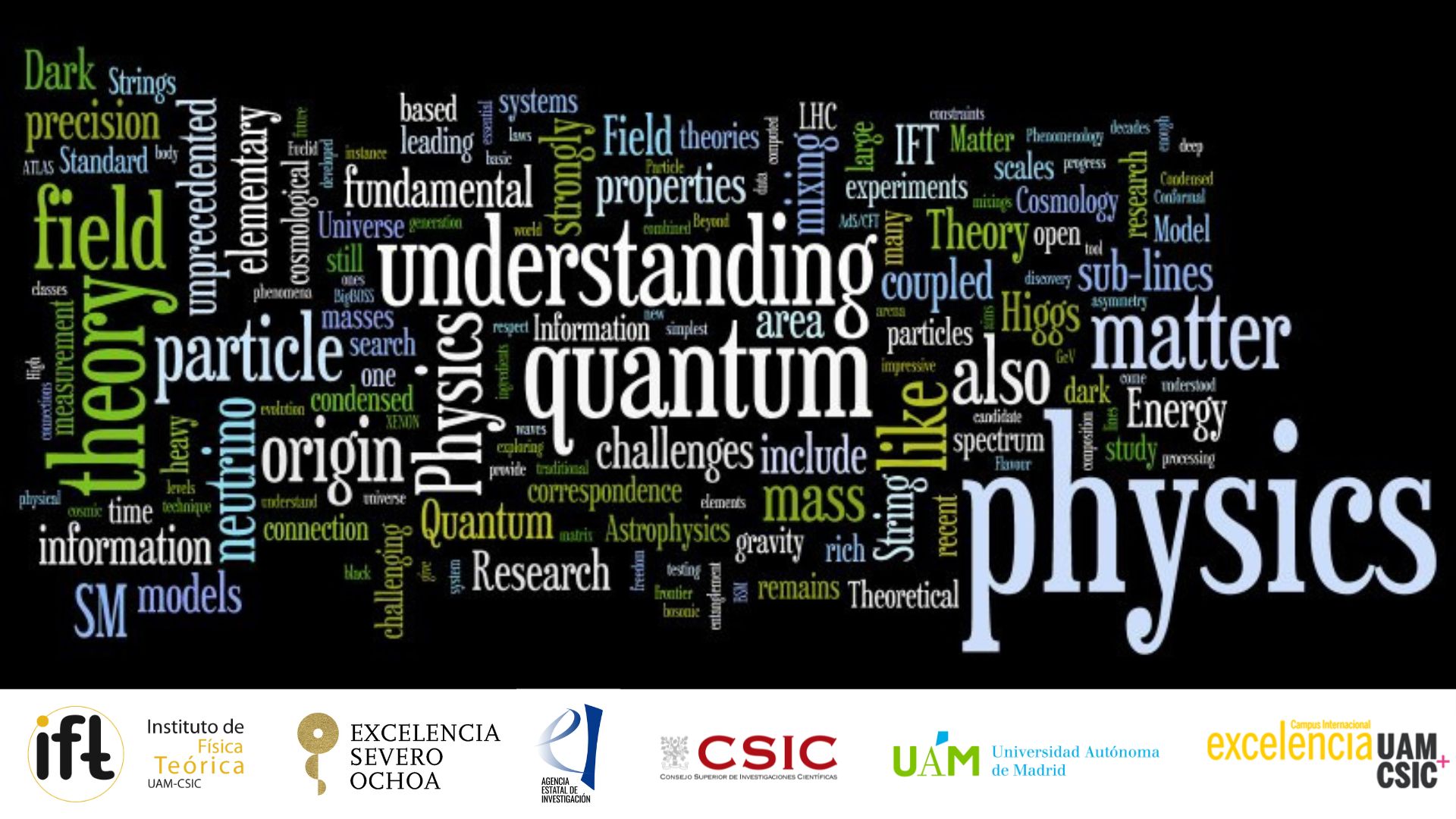Centro de Excelencia Severo Ochoa
Menu
Search

Aula 201, Módulo 15 de la Facultad de Ciencias
Particle physics is at the dawn of a new era: the discovery of the Higgs boson
in 2012 marked a turning point, confirming, on one hand, the particle content of
the Standard Model and opening, on the other, new portals in the quest for new
physics.
Indeed, the mere existence of the Higgs boson, together with the lightness of
its mass, raises a number of challenging questions: what is the nature of the
Higgs? Is it an elementary or a composite state? What mechanism drives the
breaking of the electroweak symmetry? If any heavier physics exists, why do the
electroweak interactions live at such a lower energy?
In this thesis we address these issues with a model-independent approach, based
on the use of Effective Field Theories.
We distinguish between new physics scenarios based on a linear (such as in SUSY
models) vs on a non-linear (as in composite Higgs models) implementation of the
electroweak symmetry breaking. While in the former case, the low-energy impact
of the putative new physics is well described by a linear effective Lagrangian,
a non-linear (or chiral) effective theory is expected to be the most appropriate
choice in the presence of non-linear dynamics.
The pattern of deviations from the Standard Model expected in these two
scenarios is found to be remarkably different. In this thesis I will present the
main low-energy signatures that can allow to recognize whether the observed
Higgs scalar is a dynamical (composite) particle or rather an elementary one. In
addition, I will describe what patterns of effective couplings are produced upon
the assumption of specific composite Higgs models.
Social media